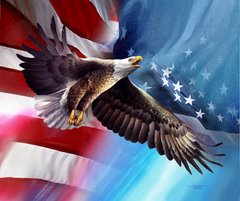
Between Feb. 16 - 19, U.S. Naval Forces conducted pre-landing bombardment on the island of Iwo Jima. At 08:59 on Feb. 19, 1945, 30,000 marines landed on the shores of Iwo Jima. After four days (Feb. 23) of yard by yard fighting, the Marines had pretty much cut off Mt. Suribachi from the rest of the island. Popular legend (embroidered by the press in the aftermath of the release of the now-famous photo "Raising the Flag on Iwo Jima") has it that the Marines fought tooth and nail all the way up to the summit. But although the riflemen were tensed for an ambush, none materialized. They made it to the summit and scrambled down again, reporting the lack of enemy contact to Colonel Chandler Johnson.
Johnson then called for a platoon of Marines to climb Suribachi. With them, he sent a small American flag to fly if they reached the summit. Again, Marines began the ascent, expecting to be ambushed at any moment. And again, the Marines reached the top of Suribachi without incident. Using a length of pipe they found among the wreckage atop the mountain, the Marines hoisted the U.S. flag over Mount Suribachi, the first foreign flag to fly on Japanese soil in centuries.
As the flag went up, Secretary of the Navy James Forrestal had just landed on the beach at the foot of Mt. Suribachi. He decided that he wanted the flag as a souvenir. Popular legend has it that Colonel Johnson wanted the flag for himself; in fact, he believed that the flag belonged to the 2nd Battalion, 28th Marines, who had captured that section of the island. He scrounged up a second flag, and sent that one up the volcano to replace the first. As the first flag came down, the second went up, and it was then that Associated Press photographer Joe Rosenthal took the famous photograph "Raising the Flag on Iwo Jima" of the replacement flag being planted on the mountain's summit.
In 36 days of fighting there were 25,851 US casualties. Of these, 6,825 Americans were killed. Virtually all 21,000 Japanese perished with only 214 surrendering.
Source: Wikipedia
Pictures courtesy of: FIRST FLAG ON SURIBACHI - THE IWO JIMA FLAG RAISING
Another interesting article on the web regarding the first flag is found at http://carol_fus.tripod.com/marines_hero_ray_jacobs.html . This article gives a very descriptive account of the flag raising.
Other Links on Iwo Jima:
http://www.nps.gov/archive/wapa/indepth/extContent/usmc/pcn-190-003131-00/sec5.htm
http://www.history.navy.mil/photos/events/wwii-pac/iwojima/iwo-3.htm











No comments:
Post a Comment